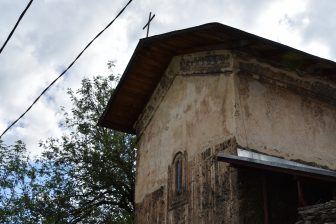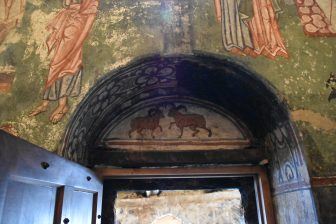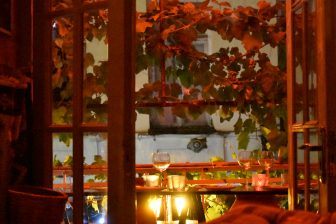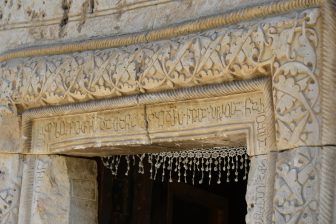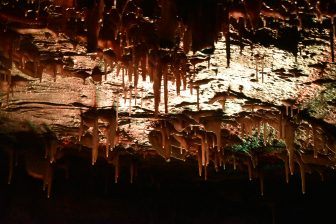
[ July, 2018 ] On the day we spent in Mestia in Georgia, we had some free time after lunch.
Mestia is 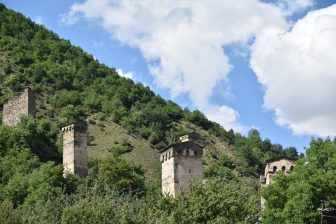 one town, but it looked like it was divided into two: one is the lively part with shops, the police station and so on, the other is the quieter area.
one town, but it looked like it was divided into two: one is the lively part with shops, the police station and so on, the other is the quieter area.
We decided to walk to this quieter part, which we had not seen.
On the way, we bought a model of the tower as a souvenir.
At one point we noticed that Ana, our guide, was walking behind us.
She was not following us, but looking for a church called the Laghami Church of Transfiguration, which she had been to once before.
Apparently, the quieter part of Mestia is called Laghami and that is the older part of the town.
We did not have any particular destination, so we decided to go to this church with her.
It took some time to find this place and when we finally arrived, we found that the church was closed.
The telephone number was written at the entrance, so Ana called the owner and had it opened.
Two Belgian women happened to be there to see this church, too, so we went into the church together.
The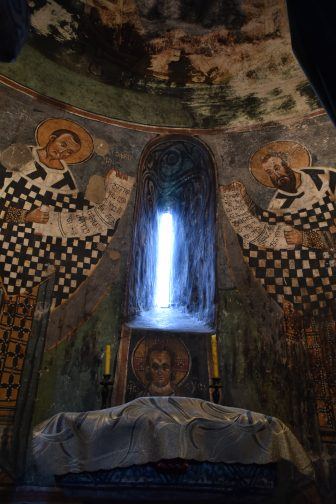
The old man who opened the church for us was a member of the family and he was an expert in restoring frescoes.
Apparently, he has restored the frescoes of not only this church but also as many as 45 churches around this area.
The speciality of this church is that there were two storeys.
We visited the upstairs first, which was built in the 10th century.
The frescoes in this part were painted in the 13th century.
The old man explained the meaning of the frescoes one by one.
He said that he leaves the old part of the frescoes when he restores them, so that people can see the differences.
We visited downstairs as well, which was built in the 8th century by some monks.
The frescoes here were painted in the 10th century and on top of them, some were painted in the 12th century.
The colour of the 10th century frescoes were better.
He explained why, but it was something to do with the technique of painting, which I could not understand well.
The outside wall of this church had some faded frescoes as well.
This church is not showy, but I would say that this is a hidden treasure of Mestia.
It was not listed in our guidebook, so I was grateful to Ana who took us here.
I said to her “I am sorry that you worked for us in your free time”, but she said “It was not work for me at all. I enjoyed 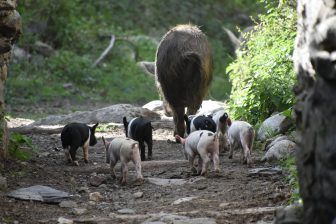
She really loves history.
On the way back to the hotel in the hot weather, we came across pigs, a sow and her piglets.
By then, we were used to the cows walking along the roads, but pigs still surprised us.

